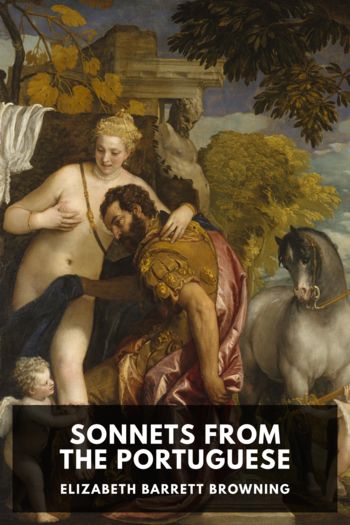Table-Talk, William Hazlitt [popular ebook readers TXT] 📗

- Author: William Hazlitt
Book online «Table-Talk, William Hazlitt [popular ebook readers TXT] 📗». Author William Hazlitt
There is nothing that helps a man in his conduct through life more than a knowledge of his own characteristic weaknesses (which, guarded against, become his strength), as there is nothing that tends more to the success of a man’s talents than his knowing the limits of his faculties, which are thus concentrated on some practicable object. One man can do but one thing. Universal pretensions end in nothing. Or, as Butler has it, too much wit requires
“As much again to govern it.”
There are those who have gone, for want of this self-knowledge, strangely out of their way, and others who have never found it. We find many who succeed in certain departments, and are yet melancholy and dissatisfied, because they failed in the one to which they first devoted themselves, like discarded lovers who pine after their scornful mistress. I will conclude with observing that authors in general overrate the extent and value of posthumous fame: for what (as it has been asked) is the amount even of Shakespeare’s fame? That in that very country which boasts his genius and his birth, perhaps, scarce one person in ten has ever heard of his name or read a syllable of his writings!
On the Picturesque and Ideal (A Fragment)The natural in visible objects is whatever is ordinarily presented to the senses: the picturesque is that which stands out and catches the attention by some striking peculiarity: the ideal is that which answers to the preconceived imagination and appetite in the mind for love and beauty. The picturesque depends chiefly on the principle of discrimination or contrast; the ideal on harmony and continuity of effect: the one surprises, the other satisfies the mind; the one starts off from a given point, the other reposes on itself; the one is determined by an excess of form, the other by a concentration of feeling.
The picturesque may be considered as something like an excrescence on the face of nature. It runs imperceptibly into the fantastical and grotesque. Fairies and satyrs are picturesque; but they are scarcely ideal. They are an extreme and unique conception of a certain thing, but not of what the mind delights in or broods fondly over. The image created by the artist’s hand is not moulded and fashioned by the love of good and yearning after grace and beauty, but rather the contrary: that is they are ideal deformity, not ideal beauty. Rubens was perhaps the most picturesque of painters; but he was almost the least ideal. So Rembrandt was (out of sight) the most picturesque of colourists; as Correggio was the most ideal. In other words, his composition of light and shade is more a whole, more in unison, more blended into the same harmonious feeling than Rembrandt’s, who staggers by contrast, but does not soothe by gradation. Correggio’s forms, indeed, had a picturesque air; for they often incline (even when most beautiful) to the quaintness of caricature. Van Dyke, I think, was at once the least picturesque and least ideal of all the great painters. He was purely natural, and neither selected from outward forms





Comments (0)